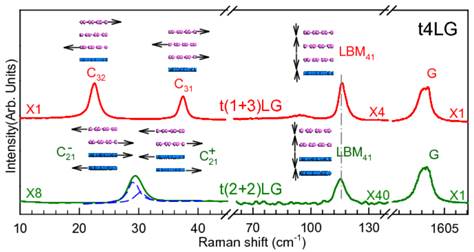

Raman spectroscopy is the prime nondestructive characterization tool for graphene and related layered materials. The shear (C) and layer breathing modes (LBMs) are due to relative motions of the planes, either perpendicular or parallel to their normal. This allows one to directly probe the interlayer interactions in multilayer samples.
Graphene and other two-dimensional (2D) crystals can be combined to form hybrids and heterostructures, creating materials on demand with properties determined by the interlayer interaction. This is the case even for a single material, where multilayer stacks with different relative orientations have different optical and electronic properties.

In recent years, Doctoral Student Wu Jiangbing and Professor Tan Pingheng from the Key Laboratory on Superlattice Structure of the Institute of Semiconductors,Chinese Academy of Sciences in cooperation with Professor Ferrary found that in twisted multilayer graphene there is a significant enhancement of the C modes due to resonance with new optically-allowed electronic transitions determined by the relative orientation of the layers. Here they show that this applies also to the LBMs, which can be now directly measured at room temperature. We find that twisting has a small effect on LBMs, quite different from the case of the C modes. This implies that the periodicity mismatch between two twisted layers mostly affects shear interactions. Their work shows that ultralow-frequency Raman spectroscopy is an ideal tool to uncover the interface coupling of 2D hybrids and heterostructures. This achievement was recently published online by ACS Nano (http://dx.doi.org/10.1021/acsnano.5b02502).